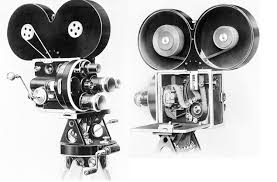< Program < PANEL NO. 3: Cameras, Projectors, and Trick Photography
During the early years of motion picture production, companies manufactured or purchased their own studio cameras. The box cameras from companies such as Pathé and Debrie were advertised in the trades for around $250, a steep sum that increasingly become the responsibility of the cameramen themselves. As the role of cameraman was professionalized, the job came to require the purchase and maintenance of their own motion picture camera. By 1915, this camera was virtually required to be a Bell & Howell which retailed for $1080, more than the average annual salary in the US. While the Bell & Howell camera was largely acknowledged to be of exceptional quality, how could producers justify requiring such a huge investment from their workers? That this system prevailed is a symptom of larger trajectories around the management of technology in the motion picture industry in the transitional era. Bell & Howell began in 1907 as a manufacturer of film perforators and printers. They added the camera two years later as a part of their strategy to standardize tools across the motion picture field. All of their various machines were compatible with each other, allowing the company to advertise their commitment to efficiency and economy while also requiring companies and workers to use their entire line of products. Likewise, as the cameramen professionalized, the investment in the camera was a marker of their dedication to the work and their willingness to participate in this system. By looking at the trajectory of the Bell & Howell camera, its use and marketing strategies, from its introduction through the 1910s, this paper shows how the centrality of this tool of film production reinforces the increased values of standardization and professionalization as the industry grew into its mature form.

Luci Marzola (University of California Irvine)
Luci Marzola is a Lecturer of Film and Media Studies at University of California Irvine. She was a 2019-2020 Fellow with the National Endowment for the Humanities. Her work on the history of motion picture technology has been published in Film History, Historical Journal of Film, Radio, and Television, Spectator, The Velvet Light Trap and is forthcoming in the Oxford Handbook to Silent Cinema. Her forthcoming book for Oxford University Press is titled Engineering Hollywood: Technology, Technicians, and the Science of Building the Studio System.
